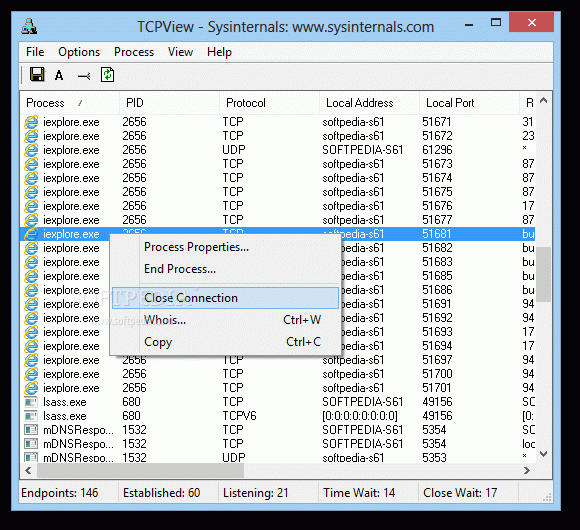TCPView 3.05 Crack + Activation Code (Updated)
Computer applications connect to the Internet using several types of protocols and if you want to analyze their details, you need to resort to a dedicated software solution such as TCPView.
This application can be run on all Windows editions newer than XP and it can display details related to the state of TCP and UDP endpoints on your PC, while also resolving IP addresses to their corresponding domain name versions.

Download TCPView Crack
| Software developer |
Sysinternals
|
| Grade |
3.9
1878
3.9
|
| Downloads count | 127962 |
| File size | < 1 MB |
| Systems | Windows XP, Windows Vista, Windows 7, Windows 2003, Windows 2008 |
Transmission Control Protocol (TCP) protocol is used by most programs, as it provides them with stable and error-free Internet connection, as needed by web browsers and email clients. On the other hand, User Datagram Protocol (UDP) focuses more on reduced latency and low-overhead operation.
TCPView is a user-friendly application that does not need to be installed as it can be run as soon as you unpack the archive and it instantly displays all the running processes on your PC, including the ones that connect to the Internet. You can also set the app to display the unconnected endpoints or to skip them.
You can explore the properties of each process and terminate whichever you choose, as well as close any connection. In addition, you can perform a Whois operation on any suspicious connection to prevent any malicious behavior.
In addition to the possibility to modify the font type, style and size used within the main window of TCPView Serial, you can also adjust the refresh interval as you see fit, to reduce the strain on your computer, and even pause the refresh task.
Moreover, you can save the current list to a TXT file that you can later share with a more experienced user who has more knowledge about endpoints than you.
All in all, TCPView is a tiny yet powerful utility that can be used to analyze the state of TCP and UDP endpoints or to explore running processes.
